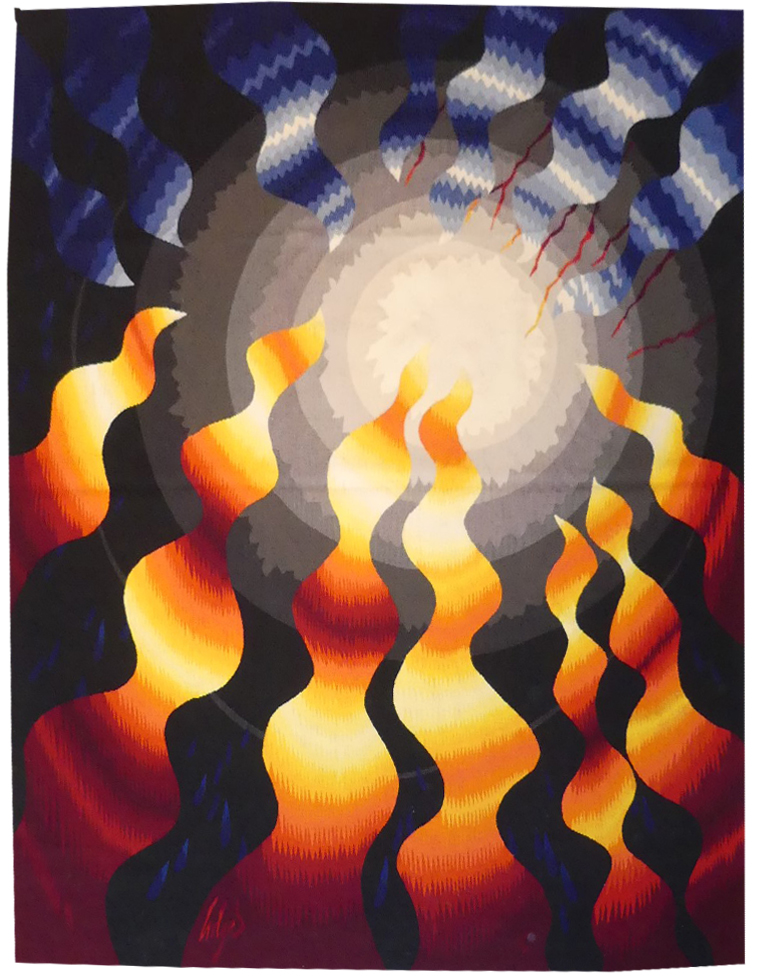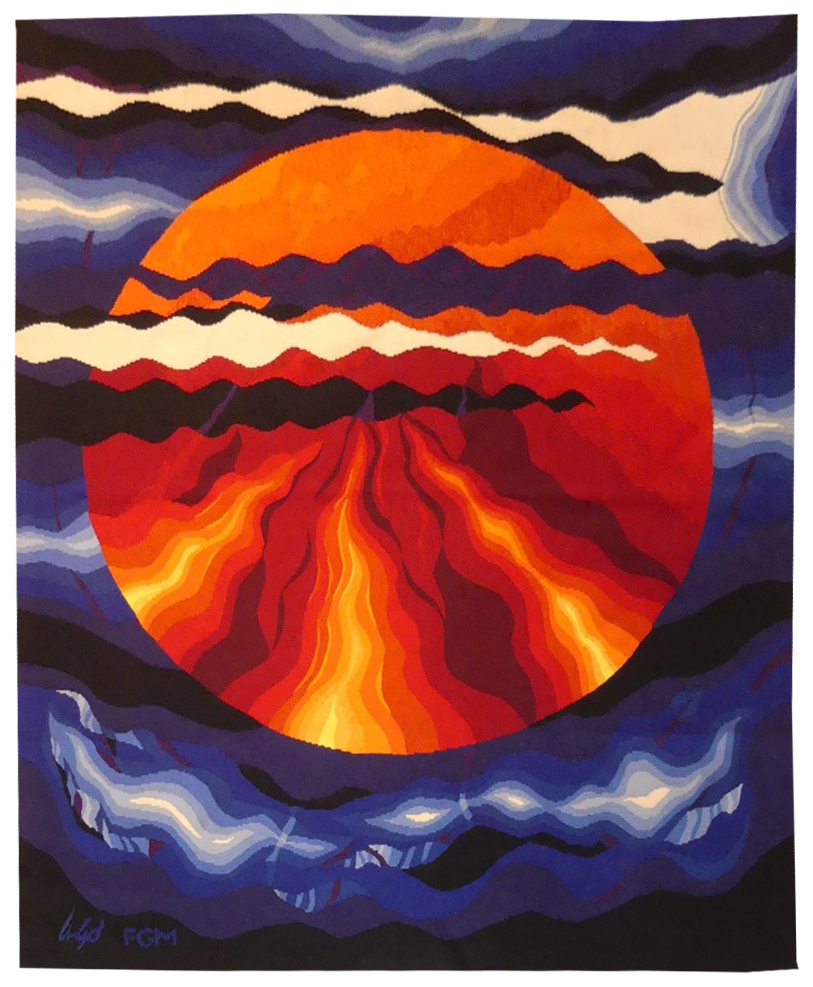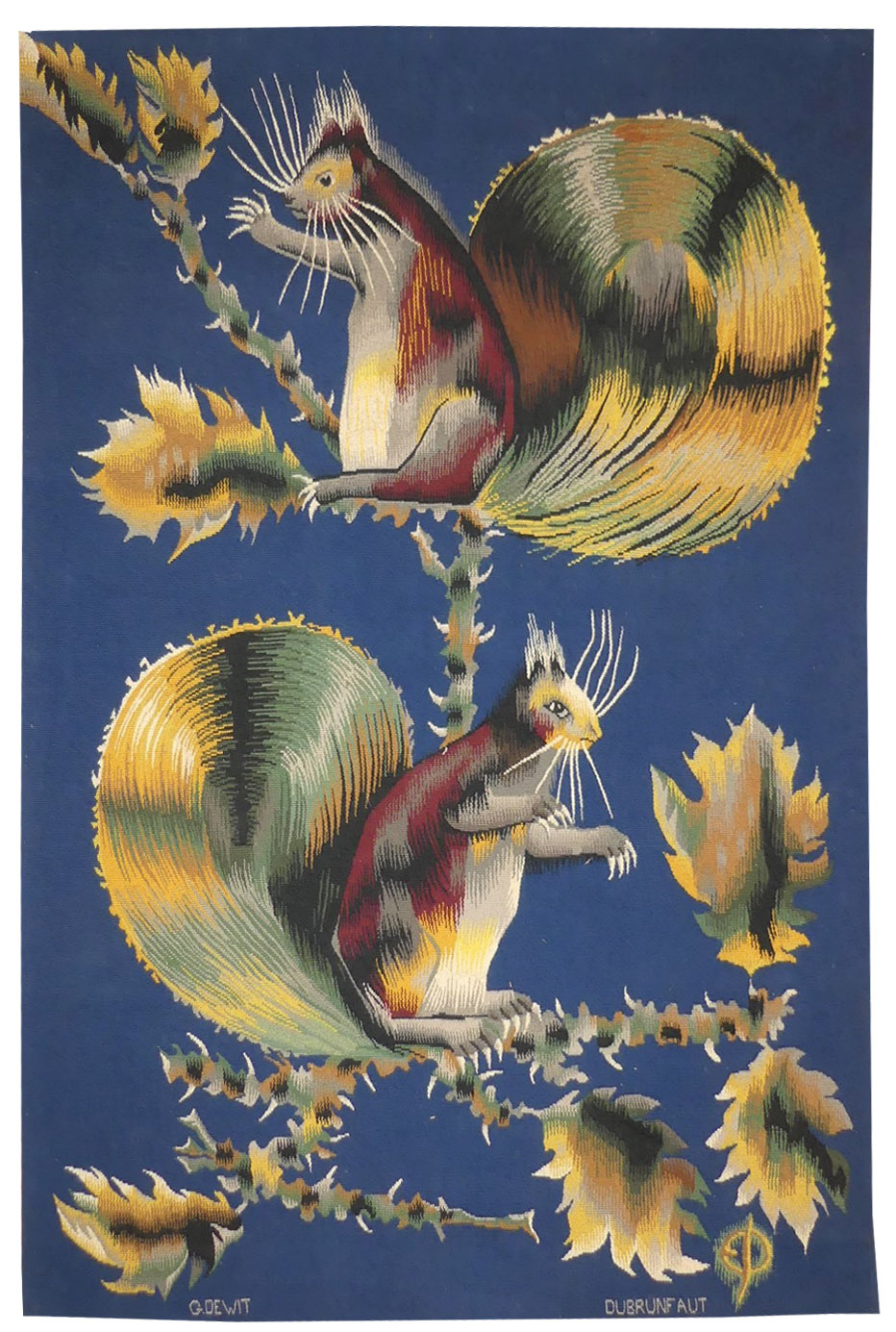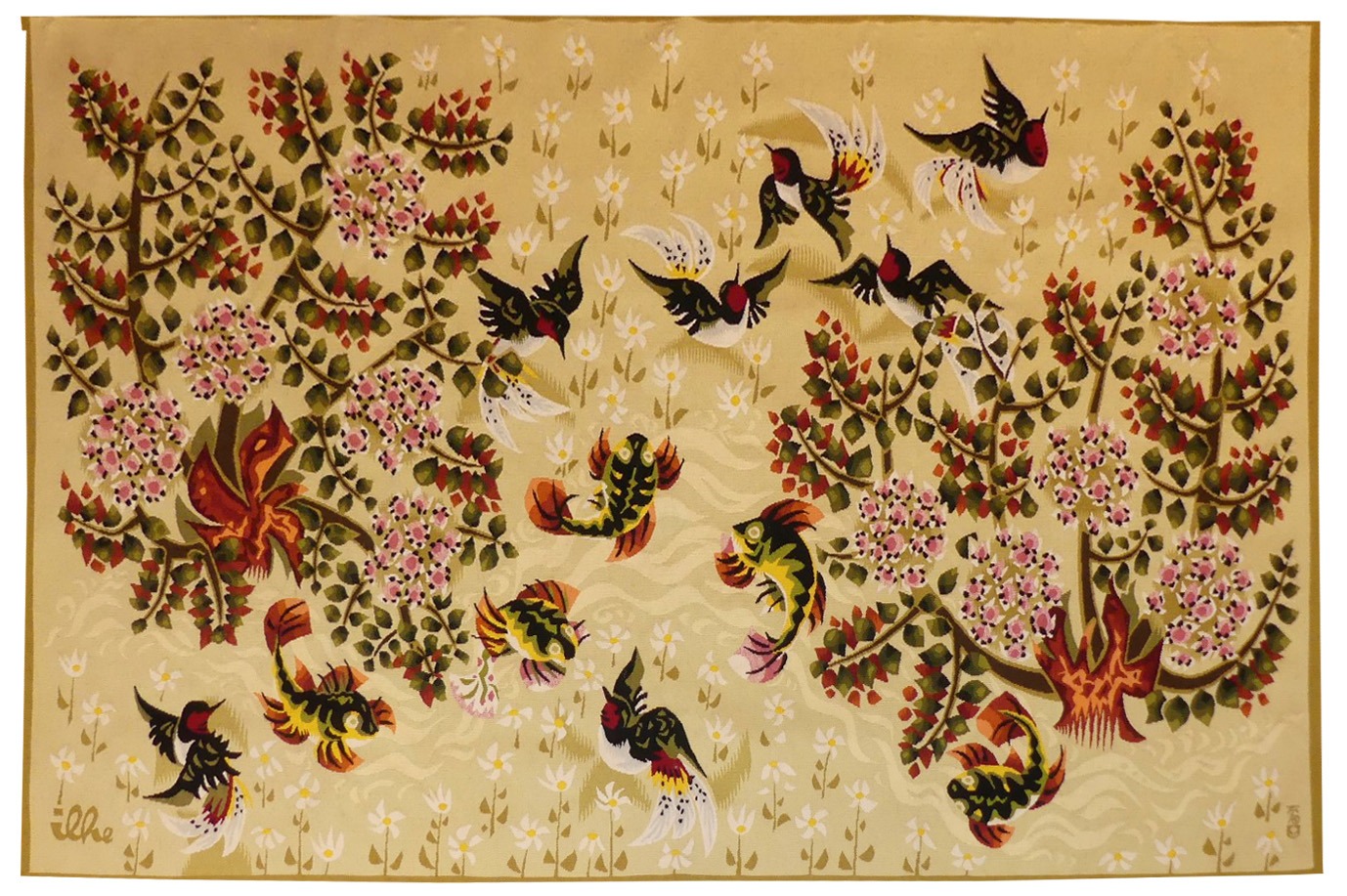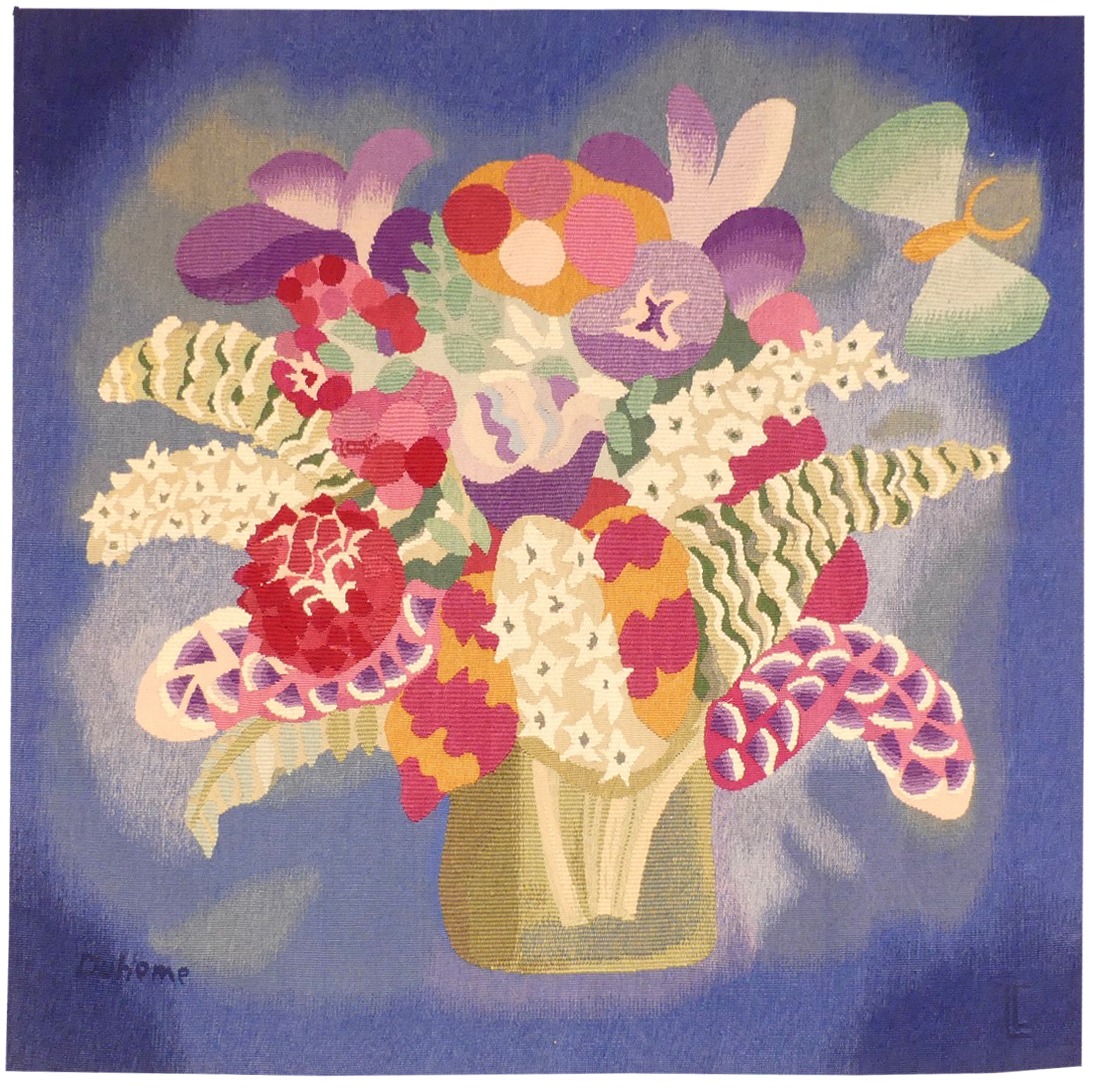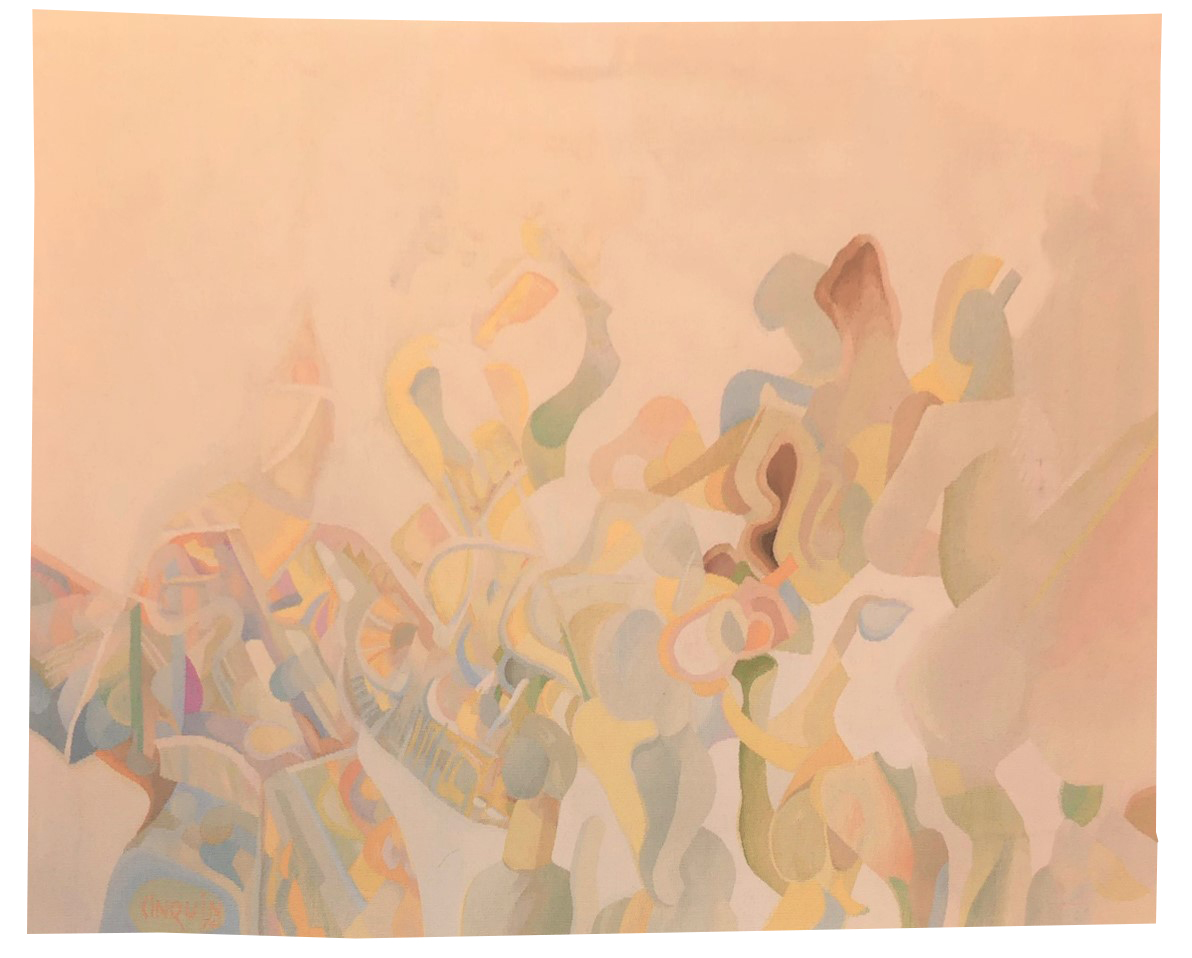-
Feuer und Wasser (Fire and Water)
Tapestry woven by the Münchener Gobelin Manufaktur. With signed label. Circa 1970. -
Mond und Wasser (Moon and Water)
Tapestry woven by the Münchener Gobelin Manufaktur. Circa 1970. -
Les 3 Grâces (the 3 Graces)
Braque is another 20th century artist who produced, however modestly, works in tapestry form. It was originally at the request of Marie Cuttoli in 1933, that he submitted works for reproduction as tapestries (Nature morte au guéridon [Still life on an occasional table], conserved at the Musée des Beaux Arts in Grenoble). In the 1950’s and 60’s it was Pierre Baudouin, in association with the weavers of Aubusson and the Nationale Manufactures, who would be asked to transcribe to cartoon format some of the artist’s productions. At the same time, shortly before his death in 1963, Braque made a last series of images in gouache, taking as their theme metamorphoses, which were destined for reproduction in various different media. Tapestry would be one of these. “The three graces”, 1962, is one which would appear in sculpture, or as jewelry. In it we observe the lyrical and synthetic style to be found in the artist’s last works (obviously the decor of the ceiling in the Henri II room at the Louvre, les Oiseaux [the birds] 1953 comes to mind).Aubusson tapestry woven by the Four workshop. N°3/6. Woven circa 2000, after a 1962 gouache. -
Laissez les vivre (let them live)
Aubusson tapestry woven in the Tabard workshop. With signed label, n°6/8. Circa 1970. -
Bouquet papillon (bunch butterfly)
Aubusson tapestry woven in the Legoueix workshop. With signed label, n°4/6. Circa 1970. -
Le clown (the clown)
Aubusson tapestry woven by the Hecquet workshop. With signed label, n°1/1. 1974. -
Le coquillage étoilé (the starry seashell)
Aubusson tapestry woven by the Berthaut workshop. With label signed by the artist. 1959. -
Le petit vin blanc (a little white wine)
Aubusson tapestry woven by the Picaud workshop. With label. Circa 1960. Jean Picart le Doux is one of the foremost figures in the renaissance of the art of tapestry. His earliest contributions to the field date back to 1943 when he designed cartoons for the passenger ship “la Marseillaise”. A close associate of Lurçat, whose theories he would adopt (limited palette, numbered cartoons...), he was a founding member of the A.P.C.T. (Association des Peintres-cartonniers de Tapisserie), and soon after, a teacher at the Ecole Nationale Supérieure des Arts Décoratifs. The state gave him several commissions most of them at the Aubusson workshop, and some at the Gobelins : the most spectacular of these being for the University of Caen, the Theatre in Le Mans, the passenger ship France or the Prefecture of the Creuse département ... In as much as Picart le Doux’s aesthetic is close to that of Lurçat, so also is his insipiration and his subject matter, although in a register which is more decorative than symbolic, where he brings together heavenly bodies (the sun, the moon, the stars...), the elements, nature (wheat, vines, fish, birds...), man, literary quotation ... In a symetrical composition such as Picart le Doux prefers, he reproduces certain elements of « Rouge et or » Red and gold (Bruzeau n° 125, 1962). “Nuits Saint-Georges” dates from 1961. But it was Lurçat who was noted for creating cartoons devoted to wine-making themes. Bibliography : Marthe Belle-Joufray, Jean Picart le Doux, Publications filmées d’art et d’histoire, 1966 Maurice Bruzeau, Jean Picart le Doux, Murs de soleil, Editions Cercle d’art, 1972 Exhibition Catalogue, Jean Picart le Doux, tapisseries, Musée de Saint-Denis, 1976 Exhibition Catalogue Jean Picart le Doux, Musée de la Poste, 1980



